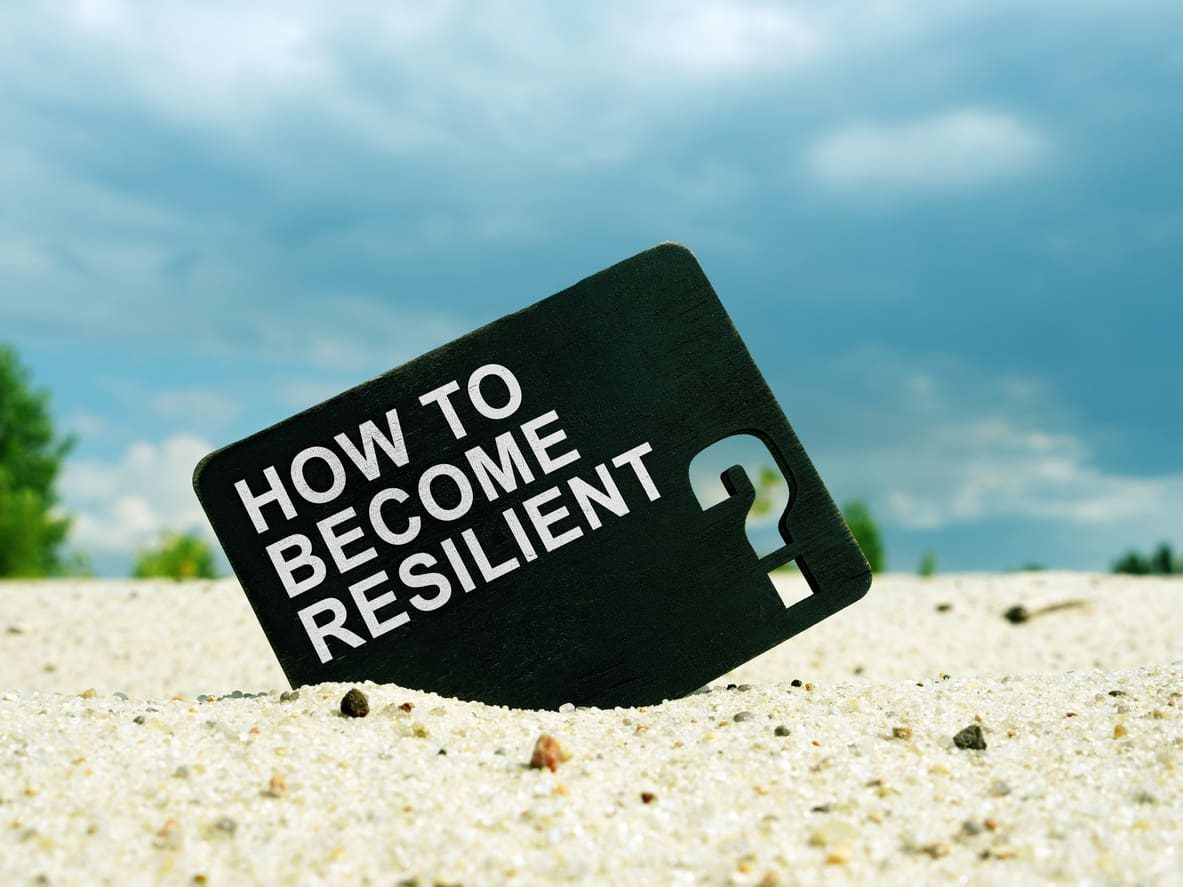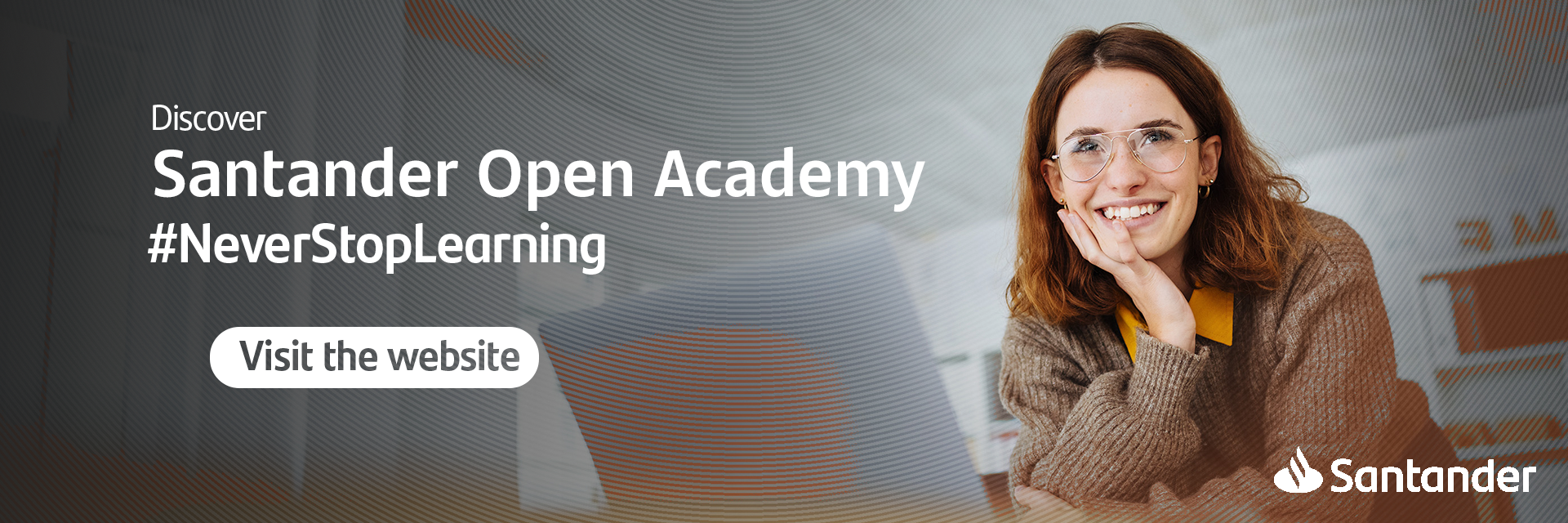What is a resilient person and how can you become one?
Stephen Hawking, physicist and studier of the universe, suffered from ALS, an incurable degenerative disease, and doctors all assured him that he wouldn't live long. However, despite needing to use a wheelchair and speaking via an electronic device, Hawking went on to become one of the most famous scientists in the world.
It's clear he had the ability to overcome difficulties and conquer adversity, in short: he was a resilient person. In this article, we explain what emotional resilience is and we will provide real-life examples of people who have overcome difficult situations and who, therefore, have the attributes that define a resilient person.
What is emotional resilience?
The word resilience comes from the Latin "resilio", formed by the verb "salio" (jump) with the prefix "re", indicating repetition. So, the meaning is literally “to jump again”, or “bounce back”. Meanwhile, the Merriam Webster Dictionary defines resilience as "an ability to recover from or adjust easily to misfortune or change".
From the psychology perspective, emotional resilience is the ability to deal with adversity in a constructive way, adapting and becoming stronger in the face of traumatic events. Therefore, a resilient person is one who learns from the adverse situations they experience, and is able to see the positive side of things.

What is a resilient person? 4 examples of emotional resilience
There are numerous real-life examples that illustrate how the attributes associated with a resilient person work in practice. Some of these include:
Albert Espinosa
Albert Espinosa, a Spanish screenwriter, author, actor and film director, was just 13 years old when he lost a leg to osteosarcoma. Then at 16, he had to have one of his lungs removed, and, at 18, part of his liver, meaning that he has spent a large part of his life in hospital.
Despite all of this, these experiences have served as a source of inspiration for his scripts and books. In fact, in all his writings or musings on his life, he adds a large dose of humour, as well as transmitting positivity and a strong will to live. As it happens, his best known motivational slogan is "The sad thing is not living life to the full".
Malala Yousafzai
Malala Yousafzai is a Pakistani activist. In the year 2012, she was travelling on a school bus in Pakistan when she was shot in the head and neck by two members of a terrorist group. She was targeted because of her demands for girls' right to education.
Despite requiring multiple surgeries, months later, when she was released from hospital, she continued her fight for the cause. In fact, her tenacity and belief in her own ability to overcome adversity would see her become the youngest ever Nobel Peace Prize winner in 2014, at just 17 years old.
Rebecca Kabugho
"In the civil and non-violent struggle, you can be arrested, condemned, you can even die, but these are not reasons to give up”. This phrase demonstrates the determination of Rebecca, a young activist in the civil movement Fight for Change (LUCHA) in the Democratic Republic of the Congo.
Rebecca was arrested in 2016 for protesting in support of elections being held in her country, in compliance with the constitution. The image of her behind prison bars went viral, and in March 2017, she was awarded the Woman of Courage prize in recognition of her fortitude and leadership.
Howard Schultz
Howard would eventually become the CEO of Starbucks, but he didn’t have an easy start in life. Brought up in a very humble environment in Brooklyn, he barely made enough money to live on. He went to university thanks to a grant and graduated with a degree in Communications.
Over the years, he worked at Xerox and Hammarplast, a Swedish drip coffee maker. It just so happened that one of this company's clients was the Starbucks Coffee Company in Seattle, and Howard ended up working with them as a Marketing Director.
On a visit to Milan, he noticed that cafes not only served excellent coffee, but were also used as meeting places. Seeking to apply these ideas at Starbucks, he launched a successful pilot project, but the owners didn't want to roll it out across the board.
In 1985, he left Starbucks and created the Il Giornale coffee chain. Not long after, Starbucks sold its business to Howard, who expanded the company internationally and went on to create an entire empire. Starbucks is well-known for its Corporate Social Responsibility, as it provides medical insurance to all its employees and promotes training.

How can you become a more resilient person?
Resilience is not always an innate attribute, although some people have a greater propensity for it. But anyone can develop emotional resilience and there are a few tips and tricks to help you do just that:
- Develop your creativity: creativity is a fundamental skill that needs to be fostered if you want to be a resilient person, as it helps us to find new perspectives and ways to face difficulties.
- Be optimistic: a resilient person has the ability to live in the present, free from guilt stemming from the past, and with no uncertainties regarding the future. On this note, one way to develop the ability to live in the present is through the practice of mindfulness, which helps you enjoy the little things in life.
Moreover, it's up to each of us to create good, fun moments, seeking out contact with people who transmit positivity and spending time with them to feel reinvigorated.
- Monitor how you talk about yourself: we often talk about ourselves in negative terms and use expressions such as: “I can't...”, “It's not possible for me to...”. People with emotional resilience give themselves room for manoeuvre, and know their own strengths and weaknesses. Although they know that moments of discontent are inevitable, they don't feel guilty about this.
- Manage and share your emotions: it's essential to develop emotional intelligence in order to understand how to identify and accept your own emotions and thus be able to share what you're feeling with others, so that they can help you.
- Learn from every setback: Viktor Frankl was an Austrian neurologist and psychiatrist who survived a concentration camp. In fact, he wrote a well-known book, called Man's Search for Meaning, in which he describes his experience in the concentration camp. Here, Viktor argues that it is fundamental to find meaning in any kind of existence in order to be a resilient person.
As we have seen, emotional resilience is important on both a personal and professional level. It's a skill that can also be learnt and cultivated. To do that, you need to get out of your comfort zone, discover the world, meet people from other countries and have unique experiences.
For this reason, as part of its primary mission to contribute to people's progress, overcome the challenges of the 4th industrial revolution, and grow in an inclusive and sustainable way, Banco Santander is committed to three key concepts: lifelong learning, reskilling and upskilling. To support this commitment, it has created the Santander Open Academy website, a unique and pioneering global programme.
Do you want to develop professional skills that will help you access better job opportunities? Discover Santander Open Academy, the training space you need to keep growing.
Join our global platform for learning and professional development and access courses at zero cost, training content in a wide range of formats and scholarships from leading universities and institutions.
If, like us, you believe that we should never stop learning, sign up here and find out what we have for you!
More posts to read...
-

-
 29/09/2025 | Santander Universidades
29/09/2025 | Santander UniversidadesLearning English: the key to better job opportunities
Card text

